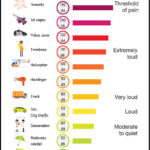When To Euthanize A Dog With Cancer
When to Euthanize a Dog with Cancer: A Comprehensive Guide for Pet Owners
Cancer is a devastating diagnosis for any pet owner. As much as we love our furry companions, sometimes the best thing we can do for them is to let them go peacefully. Euthanasia is a difficult decision that no pet owner wants to make, but it can be the kindest option when a dog’s quality of life has deteriorated due to cancer.
In this article, we’ll explore the signs and symptoms of cancer in dogs, treatment options, and ultimately when it may be time to consider euthanasia. We understand that this is a difficult topic, so we’ll approach it with empathy and sensitivity.
Understanding Cancer in Dogs
Cancer is one of the leading causes of death in dogs, with about 6 million new cases diagnosed each year. As dogs age, their risk of developing cancer increases. Some breeds are more predisposed to certain types of cancer than others, such as Golden Retrievers being more likely to develop lymphoma.
The signs of cancer in dogs can vary depending on the type and location of the tumor. Some common symptoms include:
– Lumps or bumps under the skin
– Abnormal discharge or bleeding from any part of the body
– Difficulty breathing or coughing
– Loss of appetite and weight loss
– Vomiting or diarrhea
– Difficulty urinating or defecating
– Lethargy or weakness
If you notice any of these symptoms in your dog, it’s important to take them to a veterinarian for an evaluation. Early detection and treatment can greatly improve your dog’s chances of recovery.
Treatment Options for Canine Cancer
Once your dog has been diagnosed with cancer, there are several treatment options available. The type of treatment recommended will depend on the type and stage of cancer, as well as your dog’s overall health and age.
Surgery: Surgery is often recommended for solid tumors that can be completely removed. This can include tumors on the skin, in the mouth, or in the abdomen. The goal of surgery is to remove as much of the tumor as possible while preserving normal tissue.
Chemotherapy: Chemotherapy involves using drugs to kill cancer cells throughout the body. This treatment is typically used for cancers that have spread or cannot be surgically removed. While chemotherapy can have side effects, such as nausea and fatigue, it can also extend a dog’s life and improve their quality of life.
Radiation Therapy: Radiation therapy uses high-energy radiation to kill cancer cells. This treatment is often used for localized tumors, such as those in the bone or brain. Like chemotherapy, radiation therapy can have side effects, including skin irritation and fatigue.
Clinical Trials: Clinical trials for new cancer treatments are often available to dogs with cancer. These trials can offer promising new treatments and therapies that may not yet be widely available.
When to Consider Euthanasia
Ultimately, the decision to euthanize your dog with cancer is a personal one that only you can make. It’s important to work closely with your veterinarian to assess your dog’s quality of life and determine when euthanasia may be appropriate.
Some signs that it may be time to consider euthanasia include:
– Loss of appetite and weight loss
– Difficulty breathing or coughing
– Incontinence or difficulty walking
– Pain that cannot be managed with medication
– Loss of interest in activities they once enjoyed
– Severe lethargy or weakness
It’s important to consider your dog’s overall quality of life when making this decision. If your dog is experiencing more bad days than good days, it may be time to consider euthanasia.
The process of euthanasia itself is painless and peaceful. Your veterinarian will administer a sedative followed by an injection that will stop your dog’s heart. You can choose to be present with your dog during the process, and many pet owners find comfort in being able to say goodbye.
Final Thoughts
As difficult as it is to make the decision to euthanize a dog with cancer, it can be the kindest option when their quality of life has deteriorated. It’s important to work closely with your veterinarian and consider your dog’s overall well-being when making this decision.
Remember that you are not alone in this process. There are resources available for pet owners who are navigating end-of-life care for their dogs, such as pet hospice services and grief counseling.
While losing a beloved dog is never easy, know that you gave them a wonderful life filled with love and companionship. They will always hold a special place in your heart.



